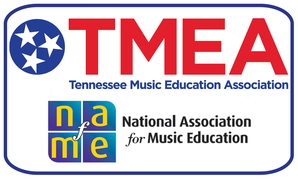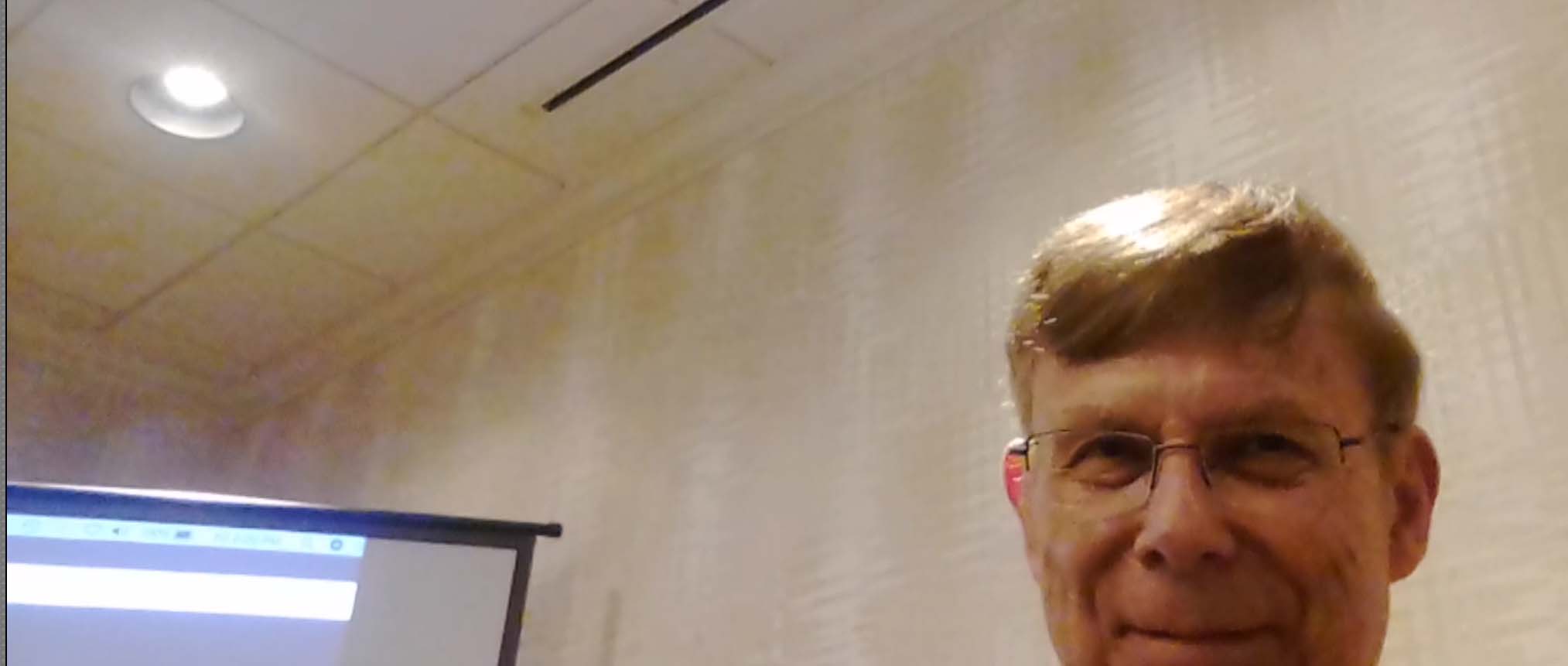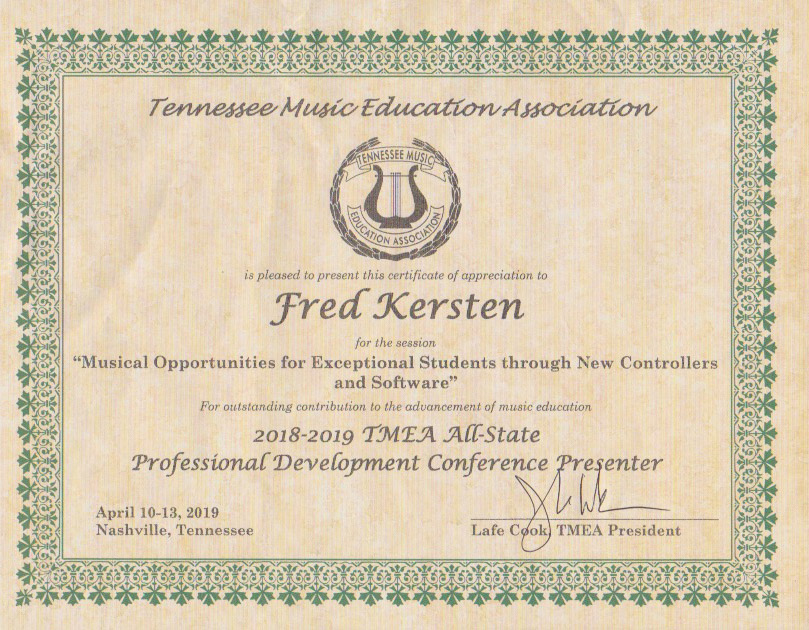
2019 TMEA Clinic-Convention:
Pedagogy From Afar:
Mini-Video Reinforcement Lessons
April 12, 2019

by
Dr. Fred Kersten


Music
teachers in colleges/public schools can quickly provide
reinforcement of
lesson elements taught by developing short mini-video distance
learning
lessons that backup new information, or, clarify unclear points that
have
occurred during a lesson, rehearsal, or class. Many times new
information
has not settled in the mind, and/or the facts taught are somewhat
vague.
The
student returns home and tries to remember: What was that new fingering
taught?
How should the embouchure be set for that high note? How did that
rhythmic
sequence sound when the teacher presented it during the lesson or class?
Having
available a short focused mini-video reexplaining the specifics taught
allows
for spontaneous recall of the instruction previously experienced. By
reliving
the instruction provided and allowing specifics to be remembered,
reinforcement
necessary for retention occurs.
Video examples should be short in duration allowing particular topics to be illustrated quickly to the viewer. Further, mini-videos do not have to be major productions but can feature the teacher, or another student, demonstrating a specific aspect to be learned. A clear and focused illustration of the problem and clarification should be provided. Musical backgrounds should be utilized to complete or reinforce musical/aesthetic aspects of the example during the learning process. Large ensemble problems can also be included. An explicit section of a composition might be scrutinized so that the musicians can develop an awareness of what they should be doing or listening for as they play the composition.
As
the teacher prepares lessons plans and thinks ahead to develop a
logical and
clearly focused sequence of logical learning activities for a class
session,
considering what aspects of a session might be reinforced through a
mini-video
will increase the initial awareness regarding potential problems and
solutions.
Pedagogical
Rationale
Of
vital significance to the mini-video is the opportunity to alleviate
the
opportunity for inaccurate information, bad habits, or musical
inaccuracies to
be learned through constant practice without access to
correction.
Many times a student returns home from a lesson and constantly
practices
the same mistake over and over because he/she has no frame of reference
to
realize the inaccuracy and correct the mistake consistently and
continuously
being reinforced. The mini-video
allows for such reference. Specifics
from the lesson can immediately be reviewed and the opportunity for
learning the
information in an erroneous and flawed manner diminishes.
Most
importantly, highly effective learning occurs as the troublesome
unlearning of
bad habits and inaccurate information does not have to take place.
Obviously musicians who have experienced this bothersome
unlearning
aspect are well aware of this problem. Frustratingly
they have had to unlearn a fingering, or a notation pattern with those
“mistake gremlins” that mysteriously occur within a passage even if it
has
been thought to be in “performance flawlessly” mode.
Possible Topics That Might Be Explored:
| *Embouchure, Fingering Clarification. |
| *Tempo, Dynamics Illustrations. |
| *Ensemble intonation problems--players are so busy performing their parts that they fail to perceive ensemble difficulties. By observing a mini-video they can perceive the overall gestalt by stepping back and watching the video for the few measures or section where the intonation difficulty is occurring. |
| *Specific rhythmic interpretation of a passage with a difficult configuration. |
*Initially
quickly review what the lesson that was taught was about.
*Indicate
specifically what is to be accomplished by working with the mini-video.
*Hit
the point and then cut-out! Reinforce
new information taught—but illustrate just one
point.
*Active
learning incorporating direct musical activity of the viewer should be
central
to the video.
TIPS
for Mini-Video Development
*
SHORT video examples utilized.
*Focus
on one specific aspect or topic only.
*You
DO NOT have to produce a major production.
*Include
yourself, the student, or other students as demonstrators.
*A
clear and focused illustration of the problem and remedy should be
provided.
*Music
participation oriented—a doing approach.
Music backgrounds may be utilized to complete or reinforce the
learning
process.
*Certainly
include small and large ensemble mini-video support.
*Provide
perspective for ensemble musicians by allowing them to hear what the
director
hears from an overall perspective involving a problem of phrasing,
dynamics, or
intonation.
Dissemination
Possibilities
*Publish
through the district website for student perusal and woodsheding.
The music
department webpage, or a performing ensemble page, may be utilized.
Allot a
certain section where pedagogy examples may be placed.
A location where weekly changes or recent uploads will be noted
is
preferable.
*You
can certainly always use You Tube.
*Be careful about copyright infringement.
*Have
student’s or other performer’s permission if they have been videoed
before
placing the file online.
As lesson plans are prepared—thinking ahead of possibilities within lessons, classes, or rehearsals where/how/when distance education mini-videos may be of assistance to reinforce unclear points to be taught. This early heuristic thinking will increase the initial awareness of teachers regarding potential problems and solutions as they initially develop their lesson plans for a specific piece of music. Many times by thinking of possible inclusion of the mini-video as a support vehicle, critical scrutiny of the teaching process and the awareness of possible problems may provide alternative solutions that may remove the need or necessity for follow-up usage of the mini-video in clarification or remediation.
Triple-Tonguing
on the Recorder
Kodály
Rhythm
Syllable Exercise
About the Presenter
Dr. Fred Kersten is an online graduate music education facilitator for Boston University. He would welcome your comments: fredkers@fredkersten.com